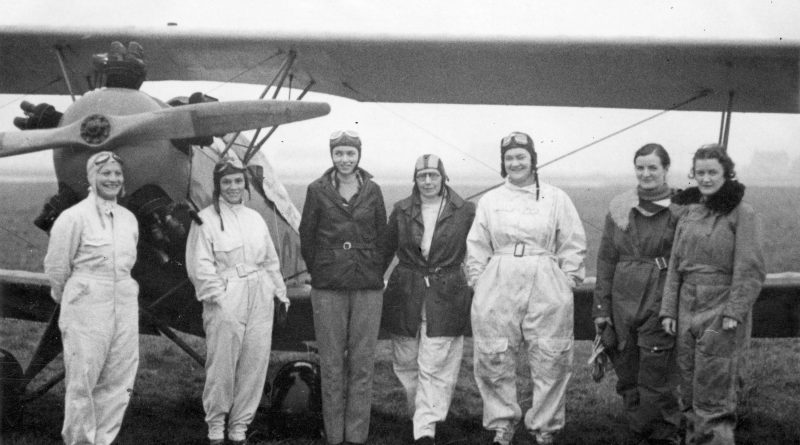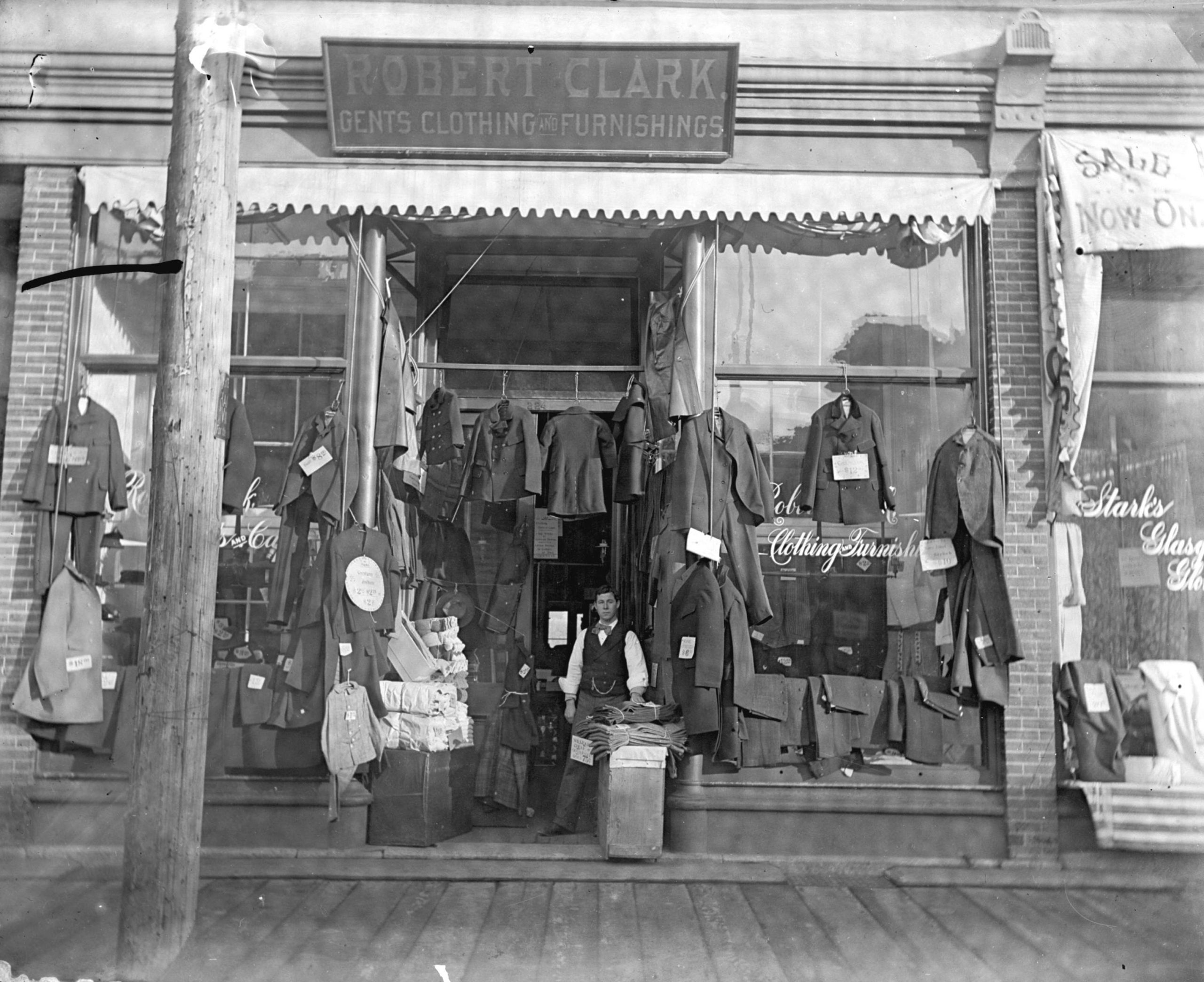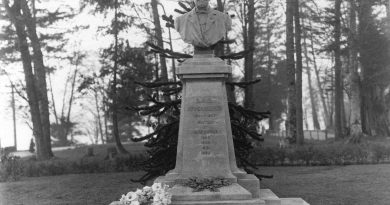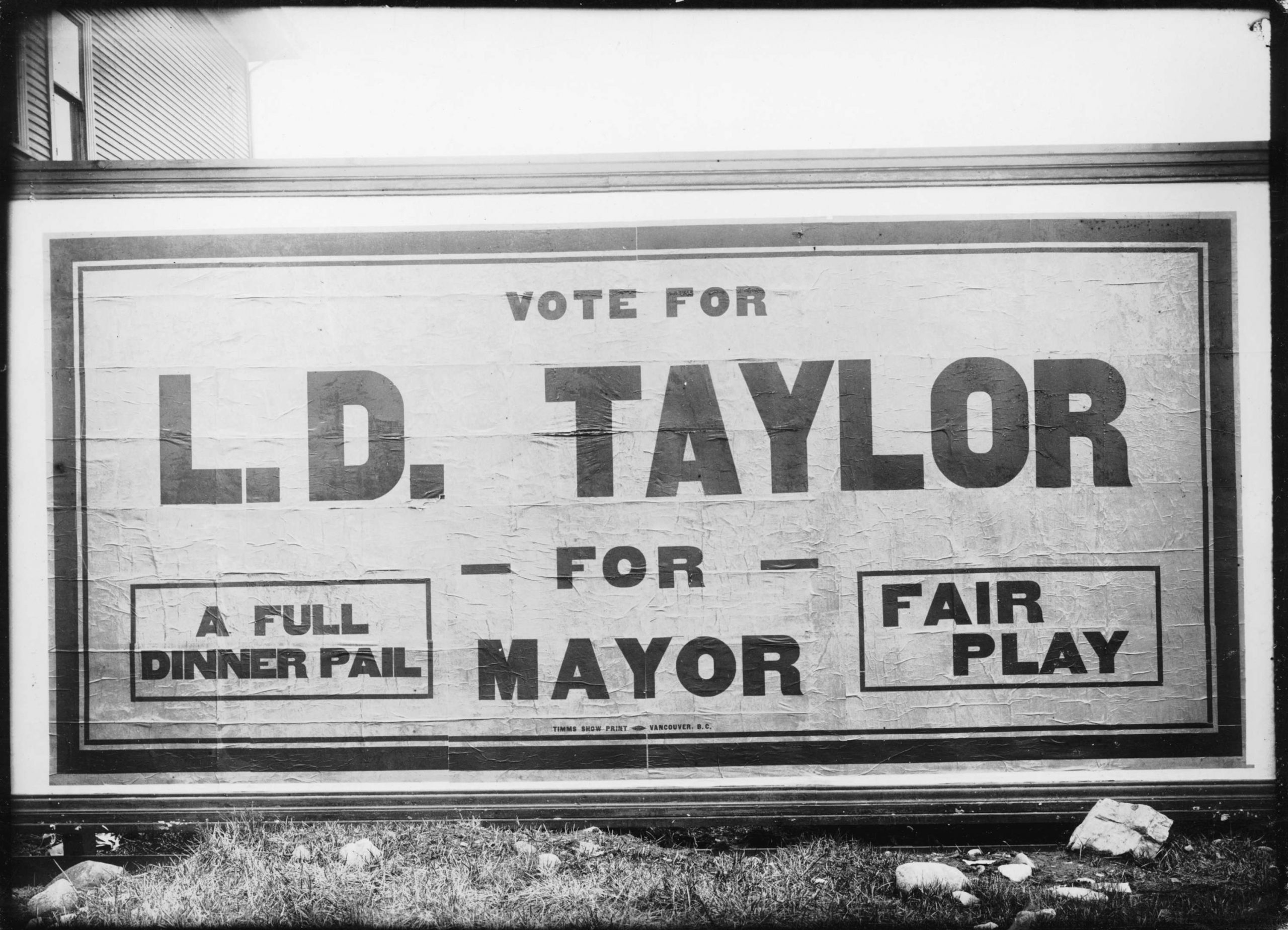Flying Seven
It’s a cold misty morning in November 1936. On the tarmac at Vancouver airport sits a motley collection of small aircraft—a couple of Fairchild biplanes, a Golden Eagle, two Fleets, two Gypsy Moths. Standing by them, shivering in the coolness and looking up into the sky, seven women wait. The first faint trace of light appears in the east and someone says, “Well, let’s start.”It’s 6:16 a.m.
Tosca Trasolini snaps on her flying helmet, climbs into the cockpit of the Fairchild, shouts “Contact!” and rolls down the runway and up into the mist.
Canada’s first all-woman ‘dawn to dusk patrol’ has begun.
For just under 11 hours, in alternating stretches of 25 minutes each, these women—The Flying Seven Club—will circle the Vancouver area in their little planes. They want to make a point, says one of them: “A woman’s place is in the air.”
The idea behind the patrol is to keep a machine in the air all day from dawn to dusk, with at least one member of the club off the ground at all times.
Besides Tosca, the club includes Margaret Fane, a 22-year-old bookkeeper and steno; Rollie Moore, who’s been giving her Burnaby family wonderful frights by learning stunt flying; Jean Pike, the ‘baby’ of the group at 20 and a secretary in the airport office; Betsy Flaherty, a buyer for the girls’ clothing department at Spencer’s Department Store; Alma Gilbert, the wife of a commercial pilot and the president of the club, and Elianne Roberge, a stenographer and one of the two members of the club who also holds a commercial licence (Margaret Fane is the other).
In 1940 four of the club’s members will stage a pamphlet ‘raid’ over Vancouver, dropping 100,000 ‘bomphlets’ from New Westminster to English Bay, bearing messages like SMASH THE NAZIS! And GIVE DIMES OR DOLLARS TO BUY OUR BOYS MORE PLANES! As the bits of paper fluttered down, sirens wailed over the city.
![The 'Flying Seven' circa 1936 (from left to right) Jean Pike, Tosca Trasolini, Betsy Flaherty, Alma Gilbert, Elianne Roberge, Margaret (Fane) Rutledge, and Rolie Moore
[Photo: cbc.ca]](https://vancouverhistory.ca/wp-content/uploads/2021/01/flying_seven.jpg)
[Photo: cbc.ca]
Later, the Flying Seven will make a contribution to the war effort by sponsoring the first aerial training centre for women in Canada. They taught flying theory and parachute packing. Some graduates of that course found work with Boeing, some in aircraft factories in eastern Canada.
Back in 1980, the Province’s Chuck Davis interviewed Elianne Roberge. She was Elianne Schlageter by then, and she and her husband Fred lived in South Vancouver.
“I got interested in flying in Prince Rupert back in 1921,” Elianne said. “We’d seen a plane flying over the town once, but one day a man who was going from Mexico to Siberia brought his plane through on a train. It was a biplane and everyone was just fascinated by it. Well, he had it tethered down that night, but a high wind came along and started knocking it around, and by the morning it was in bad shape. Kids were taking pieces of the fabric from the wings and I wanted some, too, but I was in school in the convent. So I put up my hand and said I needed to leave the room, and they let me go, but instead I ran outside and down to where the plane was and got a big chunk of the fabric.”
She laughs at the memory. “That night, I cut the fabric into one-inch squares and wrote my name and the date on each piece in ink. I sold them next day for a penny apiece. It was September 13, 1921.”
[We just Googled for that Mexico-to-Siberia trip and found this: “ Polar Bear 1921 = 2pOB. Built by Morton Bach in his backyard with design help from Clarence Prest. Used for an attempted flight from Mexico to Siberia, which ended short in northwest Canada.” The ‘Polar Bear’ referred to is likely the name of the plane.]
“The first time my mother ever saw me fly,” Elianne says, “I crashed.”
To join the Flying Seven, you had to have a flying licence. “We wouldn’t take learners,” Elianne explains. “All the girls were experienced. I started flying in 1929 and stopped in 1963. My licence is No. 678, and I still have it. You won’t find many people in Canada with a lower number.”
In 1980 all the club members, with the exception of Betsy Flaherty, who had died a few years earlier, were alive. “And the Flying Seven still exists,” Elianne says in this 1980 interview. “We never disbanded. We still have a little bank account. We still get together now and again. Tosca flew up from California on a commercial flight to see us at the Abbotsford Air Show last weekend. We’re still around.”
There is a very good background piece on the club on the web site of the BC Aviation Hall of Fame.




